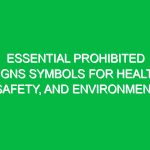Introduction
In today’s fast-paced industrial landscape, the integration of principles of risk management within the Health, Safety, and Environment (HSE) domain is not just beneficial; it is essential. The principles of risk management serve as a framework that helps organizations identify, evaluate, and mitigate risks that could potentially harm employees, the public, and the environment. These principles provide a structured approach to decision-making that enhances Safety performance while promoting a culture of continuous improvement. Understanding and implementing these principles is crucial for achieving HSE success, as they help create a safer workplace and foster sustainable environmental practices.
This article explores the essential principles of risk management in the context of HSE, providing insights into their significance and Best Practices for effective application. Whether you are an HSE manager, a Safety officer, or a corporate executive, recognizing the importance of these principles can empower you to safeguard your organization’s most valuable assets: its people and the environment.
Key Aspects of Principles of Risk Management in HSE
Understanding Risk in the HSE Context
Before delving into the principles of risk management, it’s vital to clarify what we mean by “risk.” In the HSE context, risk refers to the potential for harm or adverse Effects resulting from exposure to Hazards. These Hazards can range from chemical spills and equipment failures to ergonomic issues and environmental pollution. Risk is typically assessed by considering both the likelihood of an event occurring and the severity of its consequences.
1. Risk Identification
Effective risk management begins with risk identification. This process involves recognizing potential hazards that could impact health, safety, or the environment. Various methods can be employed for risk identification, including:
- Workplace Inspections: Regularly inspecting the workplace to identify hazards.
- Job Hazard Analysis (JHA): Analyzing specific jobs to pinpoint risks associated with tasks.
- Employee Feedback: Engaging employees in discussions about potential hazards they observe.
- Incident Reporting: Analyzing past incidents to identify recurring hazards.
An example of effective risk identification is when a manufacturing plant conducts regular safety audits, leading to the discovery of potential slip hazards in areas with high foot traffic. This proactive approach allows for immediate corrective actions, significantly reducing the risk of workplace injuries.
2. Risk Assessment
Once hazards are identified, the next step is risk assessment. This involves evaluating the likelihood and severity of potential incidents. Risk assessment typically follows these steps:
- Qualitative Assessment: Rating risks based on their likelihood and potential impact using a risk matrix.
- Quantitative Assessment: Using statistical data and models to evaluate risks numerically.
- Prioritization: Ranking risks to focus on those that pose the greatest threat.
For instance, in a construction site, the risk of falls may be assessed as high due to the nature of the work, leading to prioritization of Safety Measures such as harnesses and guardrails. This systematic approach ensures that the most pressing risks receive the attention they deserve.
3. Risk Control Measures
After assessing risks, organizations must implement appropriate Control Measures. The hierarchy of controls is a widely recognized framework that helps in this process. It includes:
- Elimination: Removing the hazard completely.
- Substitution: Replacing the hazard with a less dangerous option.
- Engineering Controls: Implementing physical changes to reduce risk (e.g., ventilation systems).
- Administrative Controls: Changing policies or Procedures to minimize risk (e.g., training programs).
- PPE: Providing Personal Protective Equipment as a last line of defense.
For example, a chemical manufacturing facility may eliminate the risk of exposure to toxic fumes by installing an effective fume extraction system and providing employees with appropriate PPE. Such strategies not only enhance safety but also foster a culture of responsibility and care among employees.
4. Risk Monitoring and Review
Risk management is not a one-time event; it requires continuous monitoring and review. Organizations must regularly assess the effectiveness of their risk control measures and adjust them as necessary. This involves:
- Regular Audits: Conducting audits to evaluate compliance with safety policies.
- Incident Analysis: Reviewing incidents and near-misses to identify areas for improvement.
- Employee Feedback: Continuously engaging employees to gather insights on the effectiveness of controls.
For example, a logistics company may conduct quarterly safety audits and use employee surveys to gather feedback on safety practices. This approach not only helps identify gaps but also promotes a culture of open communication and continuous improvement.
5. Communication and Training
Effective communication and training are integral to the success of risk management initiatives. Employees must be informed about the risks they face and trained on how to mitigate them. This includes:
- Safety Training Programs: Providing comprehensive training on safety protocols and emergency procedures.
- Regular Safety Meetings: Holding meetings to discuss safety performance and encourage employee participation.
- Clear Signage: Using signage to communicate hazards and safety instructions in the workplace.
A real-world example illustrates the importance of training: a chemical plant that implemented an extensive training program saw a significant reduction in incidents related to chemical spills. Employees became more vigilant and knowledgeable about handling hazardous materials, showcasing the impact of effective training on safety outcomes.
Benefits of Implementing Principles of Risk Management in HSE
The principles of risk management offer numerous Benefits to organizations committed to HSE success. These include:
- Enhanced Safety: By systematically identifying and mitigating risks, organizations create a safer workplace for employees.
- Regulatory Compliance: Adhering to risk management principles helps organizations comply with relevant legislation and Standards.
- Improved Reputation: A commitment to safety and environmental responsibility enhances an organization’s reputation among stakeholders.
- Cost Savings: Reducing incidents leads to lower costs associated with injuries, legal claims, and regulatory fines.
- Increased Productivity: A safe work environment fosters employee morale and productivity.
Overall, integrating the principles of risk management not only protects employees and the environment but also contributes to a more resilient and sustainable organization.
Regulations and Standards Impacting Risk Management in HSE
In the realm of HSE, various Regulations and standards govern the implementation of risk management principles. Understanding these legal frameworks is crucial for organizations seeking compliance and Best Practices. Some key regulations include:
- Occupational Safety and Health Administration (OSHA): osha sets forth regulations that require employers to provide a safe working environment, mandating risk assessments and Hazard Communication.
- Environmental Protection Agency (EPA): The EPA oversees regulations related to environmental protection, requiring organizations to manage risks associated with environmental hazards.
- ISO 45001: This international standard provides a framework for Occupational Health and safety management systems, emphasizing risk management principles.
Adhering to these regulations not only ensures compliance but also fosters a culture of safety and responsibility within organizations. For instance, compliance with OSHA regulations has been shown to significantly reduce workplace injuries and illnesses, underscoring the importance of integrating risk management into organizational practices.
Conclusion
In conclusion, the principles of risk management are fundamental to achieving success in the Health, Safety, and Environment domain. By systematically identifying, assessing, and mitigating risks, organizations can create safer workplaces, ensure regulatory compliance, and foster sustainable practices. The continuous monitoring, effective communication, and commitment to training are essential components of a robust risk management strategy.
As industries evolve and new risks emerge, organizations must remain vigilant and adaptable, embracing the principles of risk management as a core aspect of their operations. By doing so, they not only protect their employees and the environment but also position themselves as leaders in safety and Sustainability. The journey toward HSE success is ongoing, and the principles of risk management will continue to guide organizations in navigating the challenges ahead.


